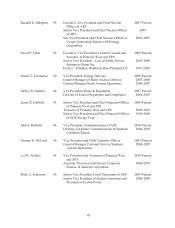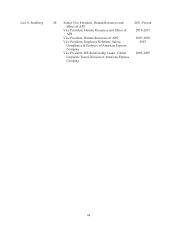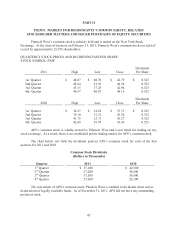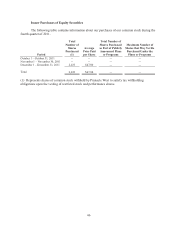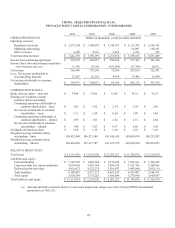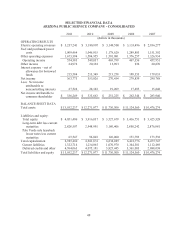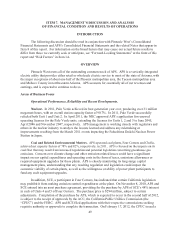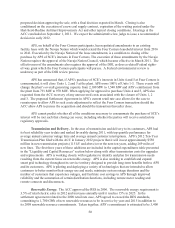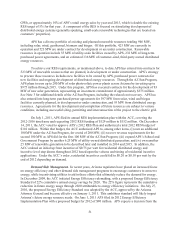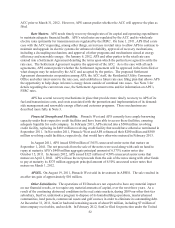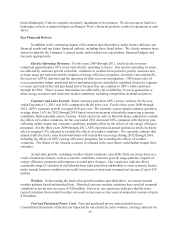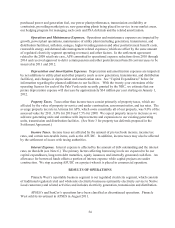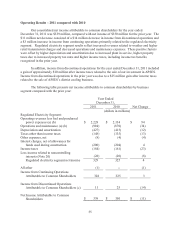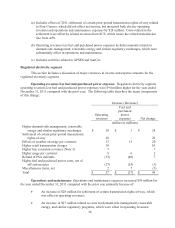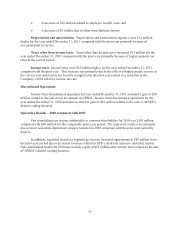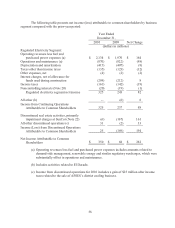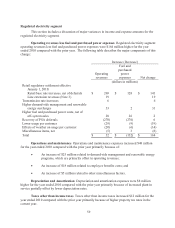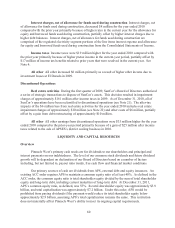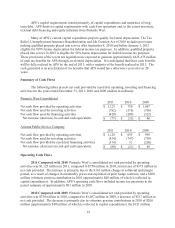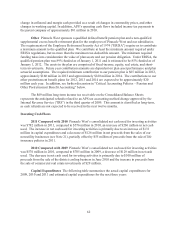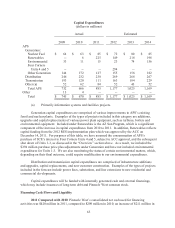APS 2011 Annual Report Download - page 77
Download and view the complete annual report
Please find page 77 of the 2011 APS annual report below. You can navigate through the pages in the report by either clicking on the pages listed below, or by using the keyword search tool below to find specific information within the annual report.53
States Bankruptcy Code to complete an orderly liquidation of its business. We do not expect SunCor’s
bankruptcy to have a material impact on Pinnacle West’s financial position, results of operations or cash
flows.
Key Financial Drivers
In addition to the continuing impact of the matters described above, many factors influence our
financial results and our future financial outlook, including those listed below. We closely monitor these
factors to plan for the Company’s current needs, and to adjust our expectations, financial budgets and
forecasts appropriately.
Electric Operating Revenues. For the years 2009 through 2011, retail electric revenues
comprised approximately 93% of our total electric operating revenues. Our electric operating revenues
are affected by customer growth or decline, variations in weather from period to period, customer mix,
average usage per customer and the impacts of energy efficiency programs, electricity rates and tariffs,
the recovery of PSA deferrals and the operation of other recovery mechanisms. Off-system sales of
excess generation output, purchased power and natural gas are included in regulated electricity segment
revenues and related fuel and purchased power because they are credited to APS’s retail customers
through the PSA. These revenue transactions are affected by the availability of excess generation or
other energy resources and wholesale market conditions, including competition, demand and prices.
Customer and Sales Growth. Retail customer growth in APS’s service territory for the year
ended December 31, 2011 was 0.4% compared with the prior year. For the three years 2009 through
2011, APS’s customer growth averaged 0.6% per year. We currently expect annual customer growth to
average about 1.6% for 2012 through 2014 based on our assessment of modestly improving economic
conditions, both nationally and in Arizona. Retail electricity sales in kilowatt-hours, adjusted to exclude
the effects of weather variations, for the year ended 2011 increased 0.6% compared with the prior year,
reflecting mildly improving economic conditions, partially offset by the effects of our energy efficiency
programs. For the three years 2009 through 2011, APS experienced annual declines in retail electricity
sales averaging 0.9%, adjusted to exclude the effects of weather variations. We currently estimate that
annual retail electricity sales in kilowatt-hours will remain flat on average during 2012 through 2014,
including the effects of APS’s energy efficiency programs, but excluding the effects of weather
variations. The failure of the Arizona economy to rebound in the near future could further impact these
estimates.
Actual sales growth, excluding weather-related variations, may differ from our projections as a
result of numerous factors, such as economic conditions, customer growth, usage patterns, impacts of
energy efficiency programs and responses to retail price changes. Our experience indicates that a
reasonable range of variation in our kilowatt-hour sales projection attributable to such economic factors
under normal business conditions can result in increases or decreases in annual net income of up to $10
million.
Weather. In forecasting the retail sales growth numbers provided above, we assume normal
weather patterns based on historical data. Historical extreme weather variations have resulted in annual
variations in net income in excess of $20 million. However, our experience indicates that the more
typical variations from normal weather can result in increases or decreases in annual net income of up to
$10 million.
Fuel and Purchased Power Costs. Fuel and purchased power costs included on our
Consolidated Statements of Income are impacted by our electricity sales volumes, existing contracts for


